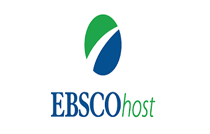Mansoura Veterinary Medical Journal
Document Type
Original Article
Subject Areas
Surgery
Keywords
donkeys, Platelet-rich Fibrin, Distal limb wound, Second intension healing
Abstract
Objective: To evaluate the effect of platelet-rich fibrin (PRF) in the promotion of distal limb wound defects healing in donkeys. Design: A randomized experimental design Animals: Twelve clinically healthy male donkeys, weighing, 130–230 kg and aged 4 –5 years were allocated into three groups(4 animals/each) and undergo a 6cm2 (2cm X 3cm) 2 wound defects on the dorsolateral surface of right metacarpal and metatarsal regions for each donkey. Control (group A): the wound defects were left for spontaneous healing. In groups B and C, the wound defects were treated with either one application of PRF (B) or with three consecutive applications of PRF (a week interval) (C). Wound defects healing were evaluated clinically, histologically and immunohistochemically, in addition to gene expression patterns of angiogenic and myofibroblastic genes vascular endothelial growth factor (VEGF-A), collagen type 3 α1 (COL3α1), and fibroblast growth factor 7 (FGF-7) and tissue growth factor β1 (TGFβ1) were performed. Results: The healing percentage of single and three PRF applications was significantly higher (P <0.05) (84.6%, and 93.7% respectively) than in control one (66.7%). The number of days needed for complete wound healing was considerably shorter in repeated PRF treated wound defects (63.2±2.8) compared with single PRF and untreated wound defects (71.6±3 and 86.3±3, respectively). Semi-quantitative evaluation of histological sections at 15 and 45 days post-operative showed a significant difference (P<0.05) in epithelization, PMNL, fibroblasts, tissue macrophages, neo-angiogenesis and new collagen scores in both PRF groups compared to control one. Qualitative analysis of immunohistochemical views of the wound defects showed a significant immunostaining difference against EGFR, VEGF, and TGFβ stain between both PRF treated groups and control one. Immunohistochemical analysis of cells stained for epidermal growth factor receptor (EGFR), VEGF, and TGFβ at 15 and 45 days after interference was higher in both PRF treated groups compared to control one, but three PRF application showed the highest rates. The relative expression of FGF-7, TGFβ1, VEGF-A, and COL3α1 genes was higher in both PRF groups compared to control one, but the triple PRF group revealed the highest expression. Conclusion and clinical relevance: Application of PRF could improve the healing of distal limb wound defects in donkeys.
How to Cite This Article
Albahrawy, Mohamed; Abouelnasr, Khaled; Hamed, Mohamed; EL-Adl, Mohamed; Mosbah, Esam; and Zaghoul, Adel
(2020)
"Immunohistochemical and gene expression analysis of autologous platelet rich fibrin for distal limb wound defects healing in donkeys (Equus asinus),"
Mansoura Veterinary Medical Journal: Vol. 21:
Iss.
1, Article 2.
DOI: https://doi.org/10.21608/mvmj.2020.21.107
Receive Date
2020-01-11
Accept Date
2020-02-25
Publication Date
3-1-2020






